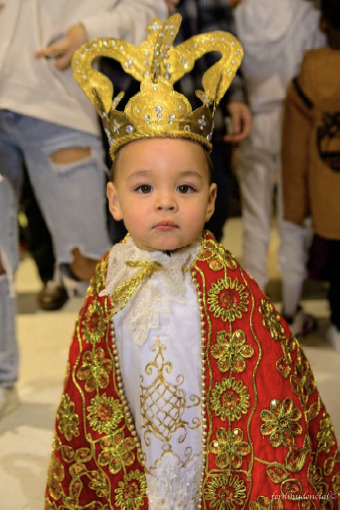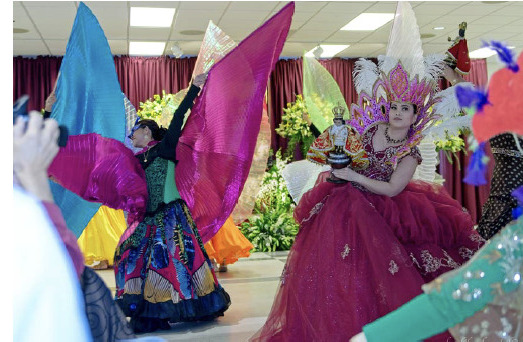Santo Niño, the Holy Child Jesus, holds a special place in the faith and history of the Filipino Catholic community. The Filipino faithful across the region celebrated their deep devotion during the Sinulog Fiesta in honor of Santo Niño at Church of the Redeemer, Mechanicsville, on Jan. 21. The event included Mass, reenactments, and special prayer dances.
Sinulog evokes a lot of nostalgia for Rey Bonjoc, one of the event organizers and parishioner at Church of the Redeemer. “This brings me back to my childhood and young adult life as my parents would often take the family to the Basilica Minore de Santo Niño to visit and celebrate Mass together,” he recalled.

The celebration is meant to mimic the annual Sinulog Fiesta in honor of Santo Niño in Cebu, an island in the Philippines. The cultural and religious festival is held each year on the third Sunday of January in Cebu City, Philippines. It is considered the largest festival in the Philippines, marking the time in 1521 when explorer Ferdinand Magellan arrived and planted a cross in Cebu, bringing Catholicism to the Philippines.
Cradle of Christianity in the Philippines
Magellan, a Portuguese explorer, voyaged to the Philippine islands more than 500 years ago. Magellan’s historian and clerk on the voyage, Antonio Pigafetta, chronicled the kindness of the Filipino people and the conversion of the king and queen of Cebu.
The queen, her husband, and 800 of their subjects were baptized. That’s when the queen was presented the wooden image of Santo Niño, the Child Jesus, as a gift from the Spanish king. Santo Niño is dressed as a Spanish monarch, wearing a crown and rich vestments.
The image of Santo Niño has survived over the centuries, even being found largely unscathed in a burning hut in 1565. A church was erected at the site where the image was found following that fire and named San Agustin Church. The church was re- named the Basilica Minore del Santo Niño following a Vatican decree 400 years later in 1965, during the fourth centennial celebration of the Christianization of the Philippines. The basilica remains home to the image, now venerated as the Divine Protector of the Philippines.
Bringing Filipino faith to America
The Filipino Catholic community in the Richmond area has been commemorating its own version of the Sinulog festival since 2010. For five years, the fiesta was held at an elementary school. In 2015, the celebration moved to Church of the Redeemer.
Bonjoc was one of the first organizers for the Richmond-area Sinulog fiesta. He is from the Cebu area of the Philippines called the Visayan Islands and came to the U.S. in 1997. “I grew up celebrating Sinulog. Santo Niño is very important to Catholics in the Visayan Islands and I wanted us to have our own celebration here in Richmond,” he said.
Bonjoc helped start the Visayan American Association of Central Virginia. The group’s main focus is keeping the key part of their faith and culture alive, which means organizing a Sinulog fiesta each year.
The event includes the traditional Sinulog dance, a prayer dance of petition, contrition, thanksgiving, and adoration. Bonjoc says the dance is meant to be an expression of their experience of God’s constant love and care for them. The movements are meant to mimic the current of Cebu’s Pahina River. Part of Sinulog comes from the word “sulog,” which means “current.”
The fiesta also includes reenactments of Magellan arriving in Cebu in 1521, the presentation of the image of Santo Niño to Cebu’s queen, and the native Sinulog dance.
Bonjoc says the event in Richmond each year brings him back to the very first Sinulog Festival that he attended in Cebu as a child. “Participating in the festivities and having a hand in planning it for the devotees of Santo Niño here in Richmond truly evoke a shared spiritual gladness,” he said.

